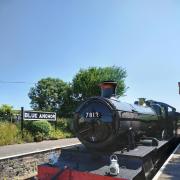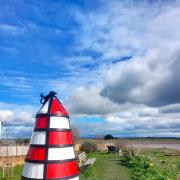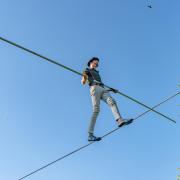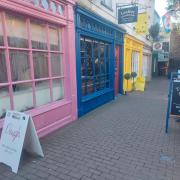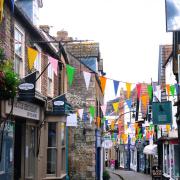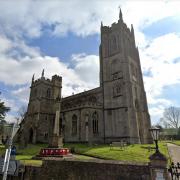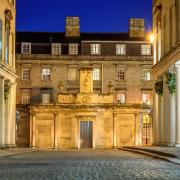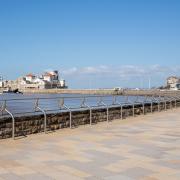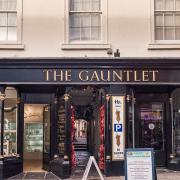Laurence McJannet reveals 10 things you may not know about this diminutive city in Somerset

The medieval city of Wells, nestling on the southern side of the Mendip Hills, has a rich and varied history dating back to Roman times, when a settlement was formed around the springs that still bubble up here. Around the gothic grandeur of its cathedral over centuries formed a city that has become the jewel in Somerset’s crown. However, there is much more to Wells than meets the eye, even to those who call it home.
1. The perception that Wells is the smallest city in the country isn’t entirely true. With fewer than 12,000 inhabitants it is indeed the least populated city in England. But the City of London (known as the Square Mile) is smallest in terms of size, while St David’s in Wales is the least populated city in the UK with fewer than 2,000 inhabitants.
2. Not surprisingly the city derives its name from three wells, one in the marketplace and two in the grounds of the Bishops Palace, all dedicated to St Andrew. In more recent times another body of water, the moat surrounding the palace, has come to embody the city. The mute swans that live here have for centuries been trained to ring bells via strings to beg for food. The only time they tend to disappear is during the annual Wells moat boat race, held every August bank holiday – an event so popular even the Bishop himself entered a raft in 2007.

3. Wells played host to another prominent collection of swans – 60 of them to be exact – in 2012, and like their mute bell-ringing counterparts these were a little out of the ordinary. Each was five-foot high, magnificently decorated and sponsored by local businesses, organisations and individuals. These sculptures, created to celebrate the Queen’s diamond jubilee, became a hugely popular public art event and tourism initiative. For three months they were displayed around Wells and the surrounding countryside before being rounded up in September and displayed in one giant flock for the Swansong Auction Preview Weekend. The event attracted more than 10,000 visitors to the Bishops Palace while the charity auction was broadcast live online and brought in bids of more than £110,000. The swan artists received 25 per cent of the auction sale price, the rest donated to local charities.
4. With the city dating back to 1205 there are buildings still standing in Wells from every epoch from the past 800 years. It is not surprising then that some of them have seen an array of uses during their lifetime. One such example is the current City Arms pub and restaurant, a 17th-century building that started life as the city jail. Whereas one time they’d have locked away drunks and disorderlies here, nowadays the owners persuade such characters to quietly leave the premises. Perhaps not the wisest choice for a lock-in then...
5. First-time visitors to Wells may feel an odd familiarity with the city. That wouldn’t be surprising given the frequency with which it is made reference to in popular culture: from local author Elizabeth Goudge, whose City of Bells series of novels from the 1930s-1960s featured a fictional cathedral city based on Wells, to film director Edgar Wright, another Wells resident, whose 2007 comedy Hot Fuzz was filmed almost entirely here. The cathedral interior has appeared in Doctor Who episode The Lazarus Experiment, as well as Elizabeth: The Golden Age, starring Cate Blanchett, while its many period buildings have made Wells the perfect setting for historical dramas such as The Libertine in 2005 with Johnny Depp and John Malkovich and the 1972 retelling of The Canterbury Tales.
6. Anyone who has walked down Vicars Close will most likely feel as though they have stepped back in time. That experience would be understandable given that the close is claimed to be the oldest fully intact residential street in Europe. Built in the 14th century to accommodate chantry priests known as the Vicars Choral, the close is about 140m long, and cleverly tapered in width by 3m to make it look longer when viewed from the main entrance.

7. August 2010 marked the end on an era for Wells Cathedral. Its clock, the oldest continually working mechanical timepiece in the world and a marvel of medieval craftsmanship, was wound by hand for the final time as the last Keeper of the Great Clock retired. The clock, built between 1386 and 1392, is now wound by electric motor. For 23 years, horologist Paul Fisher spent an exhausting hour, three times a week, turning the three 250kg weights about 800 times – much like the four generations of his family before him over the past 90 years. There were more than a couple of headlines about Mr Fisher ‘winding down’ or ‘calling time on his career...’
8. A number of prominent individuals have called Wells their home over the centuries. One name you may be familiar with is Harry Patch, the last surviving trench veteran of World War One who, at 111, was briefly the oldest man in Europe and the third oldest in the world. He was born in nearby Combe Down and his funeral was held in the cathedral in July 2009. Other residents of the city have included Roger Hollis, one-time director general of MI5; Mary Bignall-Rand, gold medallist and world record holder in the long-jump at the 1964 Olympics; and John Keate, born in Wells in 1773 and a headmaster of Eton, where he restored discipline with the birch, famously flogging 80 pupils in one day!

9. Bereft of a railway station these days, it may be galling for Wells residents to know that the city once had three. Whereas nowadays the nearest station is Castle Cary nine miles away, in the mid to late 18th century Wells boasted Priory Road, Tucker Street and a Wells East Somerset terminus. Wells’ first station, Priory Road, opened in 1859 and was on the Somerset Central Railway as the terminus of a short branch from Glastonbury. Three years later another station opened just 100 yards away, which became the terminus of the East Somerset Railway line when it was extended from Shepton Mallet. In 1870 the Cheddar Valley line from Yatton also reached Wells, where a third station, Tucker Street, was opened.
The first closure, however, was just eight years later, when through trains began running between Yatton and Witham, prompting the closure of the original East Somerset station. Priory Road closed to passengers from 1951 when the branch line from Glastonbury was shut, and Tucker Street closed in 1963 under the Beeching axe.
10. Wells certainly is a city of superlatives. Together with the oldest medieval street and oldest mechanical clock, it can also boast the heaviest ring of 10 bells in the world, substantially heavier than famous places of worship as Edinburgh Cathedral. The tenor bell in Wells Cathedral, Harewell, weighs an incredible 56 cwt – that’s almost three tonnes! Installed in 1891, the conductor for the first peal on the bells was James Washford, famous for composing the peals of London. Five of the other nine bells date back to 1757.
Not actually in Wells, but close by, Wookey Hole has a few fascinating facts of its own. Over the past 10 years ancient witch markings have been discovered in the caves, likely dating back as far as 1550. The symbols were originally thought to be graffiti, or masons’ marks, but experts now believe they were carved to ward off evil spirits. The most recent ‘ritual protection marks’, which together with some 50 others form the largest known concentration of witch markings in any cave in Britain, were found by staff creating a new caving experience at the site.
Also, it may not be many people’s idea of a romantic setting, but did you know that you can get married in the caves at Wookey Hole? Licensed wedding ceremonies can take place in one of three chambers – The Witch’s Kitchen, the Great Hall or the Witch’s Parlour.




